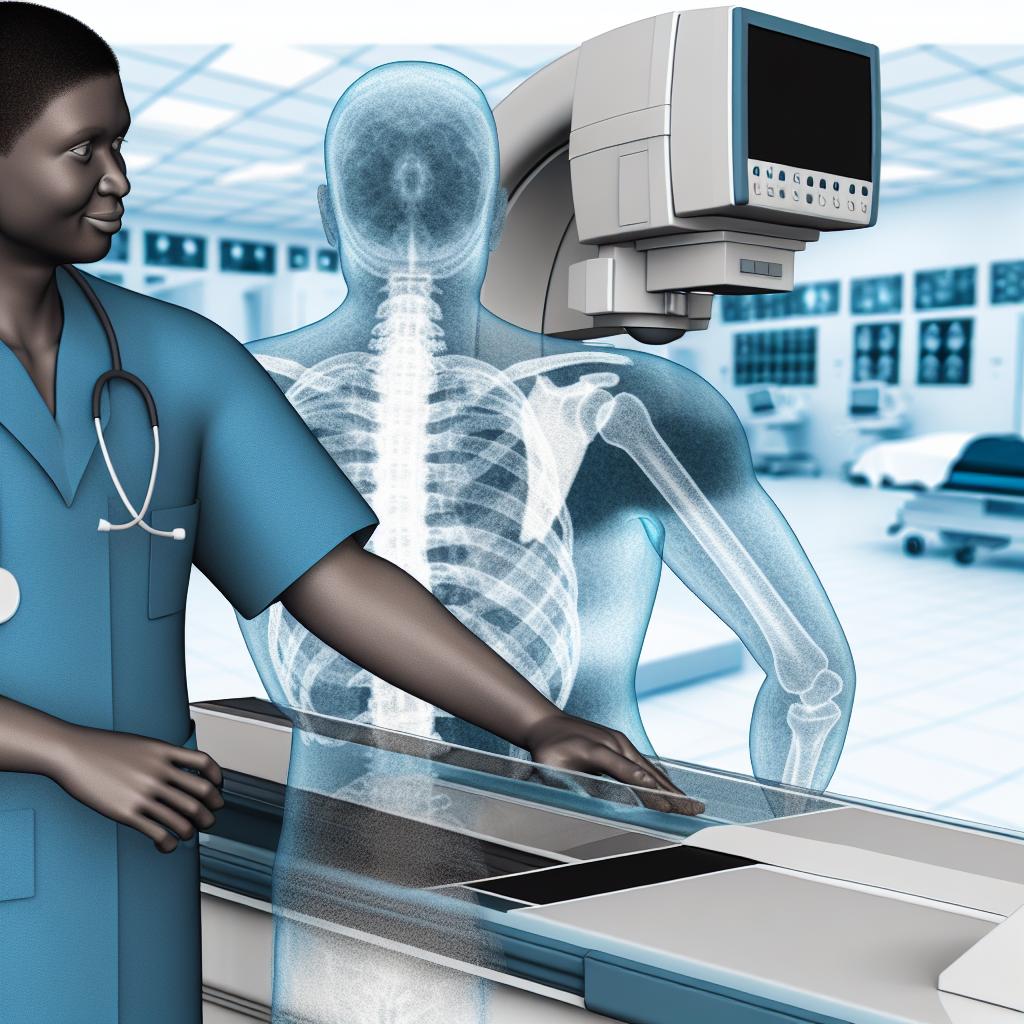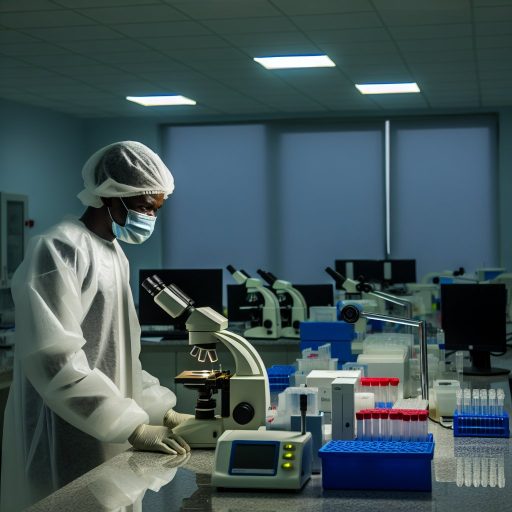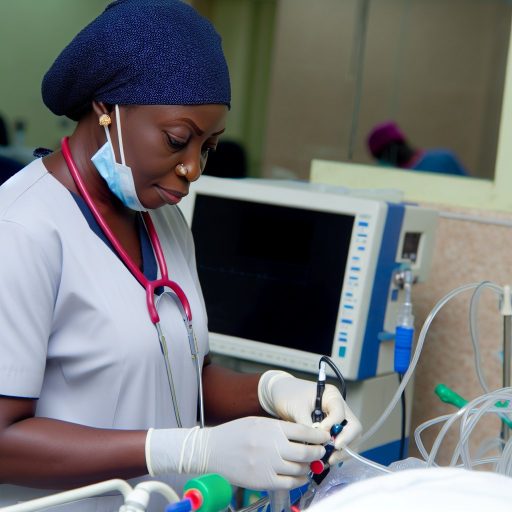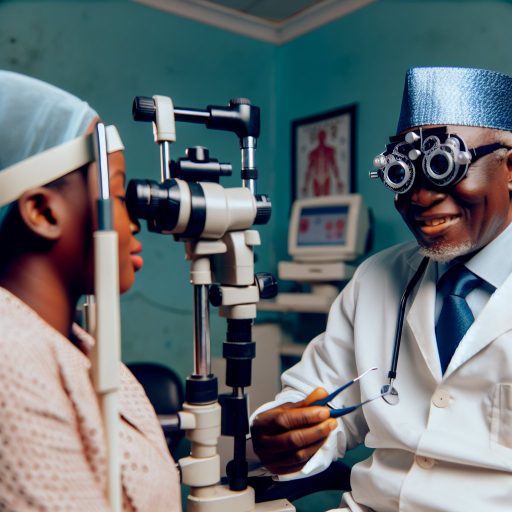Introduction:
Radiography and digital imaging play a crucial role in the healthcare sector in Nigeria.
Radiography involves capturing images of the body’s internal structures using X-rays.
Digital imaging refers to the use of computer technology to view and manipulate these images.
Importance of Radiography in Healthcare: Radiography is essential for diagnosing various medical conditions, such as fractures, tumors, and infections.
It provides valuable information to physicians for accurate diagnosis and treatment planning.
Transformation by Digital Imaging: The introduction of digital imaging has revolutionized radiography in Nigeria.
It has improved image quality, reduced radiation exposure, and facilitated easier storage and retrieval of images.
Additionally, digital imaging allows for quick transmission of images for consultation with other healthcare professionals.
Currently, radiography in Nigeria faces several challenges that hinder its effective implementation and growth.
Challenges faced by radiographers in Nigeria:
- Shortage of radiography equipment and resources:
- Lack of qualified professionals in the field:
The lack of adequate equipment and resources in medical facilities across Nigeria restricts the quality of radiography services provided.
Many hospitals and clinics lack basic radiography equipment such as X-ray machines, CT scanners, and MRI machines.
There is a shortage of qualified and trained radiographers in Nigeria.
This scarcity of skilled professionals hampers the delivery of quality radiography services and limits the scope of the field’s practice.
In addition to the aforementioned challenges, other factors contribute to the current state of radiography in Nigeria.
Advancements in Digital Imaging Technology:
Digital X-ray machines have revolutionized the field of radiography in Nigeria.
They offer numerous advantages over traditional methods.
The introduction of digital X-ray machines in Nigeria has significantly improved the efficiency and accuracy of medical imaging procedures.
Digital X-ray machines have replaced the use of traditional film-based X-rays.
This shift allows for immediate image acquisition and processing.
These machines utilize digital sensors to capture images.
Images can then be viewed on computer screens for real-time analysis.
Benefits of Digital Imaging Over Traditional Radiography Methods
Digital imaging offers several benefits.
This includes higher image quality, reduced radiation exposure, and improved workflow efficiency.
Digital images can be enhanced, manipulated, and stored electronically.
This allows for easy sharing and comparison with previous images.
The use of digital imaging reduces the need for repeat scans.
This results in cost savings and a more seamless patient experience.
With digital imaging, healthcare providers can quickly access and review images from multiple locations.
This enables faster diagnosis and treatment planning.
Impact of Digital Imaging on Diagnosis and Treatment
Digital imaging has revolutionized the field of radiology in Nigeria.
This has led to more accurate and timely diagnoses for patients.
The improved image quality provided by digital imaging technology allows for better visualization of anatomical structures and pathology.
Healthcare providers can make quicker and more informed decisions about patient care.
This is based on the detailed information provided by digital images.
Digital imaging enables remote consultations and collaborations among healthcare professionals.
This facilitates multidisciplinary treatment planning.
The advancements in digital imaging technology have transformed healthcare delivery in Nigeria.
This has led to improved patient outcomes and increased efficiency in radiology practice.
Delve into the Subject: Rehabilitation for Spinal Cord Injuries Nigeria
Training and education for radiographers in Nigeria:
- Importance of continuous training and professional development
- Need for standardization of radiography education in Nigeria
- Collaboration with international organizations for training opportunities
Continuous Training and Professional Development
In a rapidly evolving field like radiography, continuous training and professional development are crucial for radiographers in Nigeria.
Transform Your Career with Expert Guidance
Get personalized mentorship consulting that’s tailored to your unique path. Our expert advice is actionable and exclusive.
Get StartedKeeping up-to-date with the latest technology, techniques, and best practices ensures that radiographers can provide the highest quality care to patients.
Continuous training allows radiographers to improve their skills, stay current with regulatory requirements, and enhance their overall knowledge base.
This ongoing education not only benefits the individual radiographer but also contributes to the advancement of the entire radiography profession in Nigeria.
Standardization of Radiography Education
Currently, there is a need for standardization of radiography education in Nigeria to ensure that all radiography programs meet a consistent level of quality and rigor.
Standardized education will help establish a baseline of knowledge and skills for all radiographers in the country.
By setting clear standards for radiography education, Nigeria can improve the quality of training programs, enhance the competency of radiographers, and ultimately raise the standard of healthcare services in the country.
Standardization will also facilitate greater mobility and recognition of qualifications within the profession.
Collaboration with International Organizations
Collaborating with international organizations can provide valuable training opportunities for radiographers in Nigeria.
Partnering with established institutions and professional bodies from around the world can offer access to advanced training programs, workshops, and conferences.
These partnerships can also facilitate knowledge exchange, promote best practices, and enhance the global perspective of Nigerian radiographers.
By leveraging international expertise and resources, radiographers in Nigeria can broaden their skills, expand their professional networks, and stay abreast of international trends in radiography.
Explore Further: Career Path in Oral and Maxillofacial Surgery in Nigeria
Role of radiographers in healthcare:
Radiographers play a vital role in patient care and treatment.
They are responsible for capturing images that aid in the diagnosis of various medical conditions.
Radiographers ensure that accurate imaging is performed to provide doctors with the necessary information.
Their work is crucial for the proper diagnosis and treatment of patients.
Radiographers collaborate with other healthcare professionals to provide comprehensive care.
They work closely with doctors, nurses, and other staff to ensure the best possible outcomes for patients.
Radiographers may also be involved in specialized procedures, such as fluoroscopy or mammography.
They play a key role in interventional procedures, guiding doctors during surgeries or treatments.
Contribution of radiographers in patient care and treatment:
Radiographers are involved in every step of a patient’s imaging process.
From preparing the equipment to positioning the patient, they ensure everything runs smoothly.
Radiographers follow strict protocols to obtain high-quality images for accurate diagnosis.
They work with patients to explain procedures and alleviate any fears or concerns.
Radiographers play a crucial role in ensuring that patients receive the best possible care.
Their attention to detail and technical expertise contribute to successful treatment outcomes.
Radiographers also play a role in monitoring patients during procedures to ensure their safety.
They collaborate with doctors to provide images that guide treatment decisions.
Importance of accurate imaging for proper diagnosis:
Accurate imaging is essential for doctors to make informed decisions about a patient’s care.
Radiographers must ensure that images are clear, detailed, and accurately represent the patient’s condition.
Without accurate imaging, doctors may miss crucial information that could impact a patient’s treatment.
Radiographers use their expertise to adjust equipment settings for optimal image quality.
They follow protocols to ensure images are taken from the correct angles and positions.
Accurate imaging is the cornerstone of proper diagnosis and treatment planning.
Radiographers play a vital role in providing doctors with the information they need to care for patients.
Their attention to detail and technical skills are essential for accurate diagnostic imaging.
Collaborative work with other healthcare professionals:
Radiographers work closely with doctors, nurses, and other healthcare professionals.
They communicate effectively to ensure that imaging procedures meet the needs of patients.
Collaborative work allows for comprehensive care that addresses all aspects of a patient’s health.
Radiographers contribute their expertise to multidisciplinary teams to provide the best care.
They play a crucial role in ensuring that imaging services are integrated into patient care plans.
Collaboration with other healthcare professionals ensures that patients receive coordinated and effective treatment.
Radiographers may consult with specialists to obtain additional insights into complex cases.
Their teamwork and communication skills are essential for delivering high-quality care.
Learn More: Technological Advancements in Biomedical Tech Nigeria

Government regulations and policies:
– The role of government in regulating radiography practice in Nigeria
– Importance of implementing quality control measures
– Ensuring safety standards in radiography procedures
Regulating radiography practice in Nigeria:
The government plays a crucial role in regulating radiography practice to ensure the safety of patients and healthcare providers.
They set standards, guidelines, and policies that radiographers must adhere to in their daily practice.
By setting regulations, the government can monitor and control the quality of services provided by radiographers.
Implementing quality control measures:
Quality control measures are essential to ensure accurate and reliable radiographic images.
The government must enforce strict guidelines for image acquisition, processing, and interpretation.
Regular audits and inspections are necessary to identify and rectify any issues that may affect the quality of images.
Ensuring safety standards in radiography procedures:
One of the primary responsibilities of the government is to ensure the safety of patients during radiography procedures.
They must enforce radiation protection standards to minimize the risks associated with exposure to ionizing radiation.
Training programs and continuous education for radiographers are also essential to maintain safety standards.
Find Out More: Preventive Dentistry and Diabetes Management
Challenges and Opportunities for Radiography in Nigeria
Radiography in Nigeria faces several challenges and opportunities that can impact the quality of healthcare services in the country.
In this section, we will explore these issues and discuss potential solutions for advancing the field of radiography in Nigeria.
Addressing Issues of Budget Constraints and Funding for Equipment
One of the major challenges facing radiography in Nigeria is the lack of sufficient funding for equipment and infrastructure.
Many healthcare facilities struggle to acquire and maintain modern imaging equipment due to budget constraints.
This can result in delays in diagnosis and treatment, ultimately affecting patient outcomes.
To address this issue, stakeholders in the healthcare sector, including the government, private institutions, and international organizations, need to prioritize investments in radiography equipment.
This can be achieved through public-private partnerships, grant funding, and sponsorship programs aimed at upgrading and maintaining imaging facilities across the country.
Opportunities for Research and Innovation in Radiography
Despite the challenges, there are significant opportunities for research and innovation in radiography in Nigeria.
Researchers and healthcare professionals can leverage advancements in technology to improve imaging techniques, enhance diagnostic accuracy, and optimize patient care.
By collaborating with academic institutions, research organizations, and industry partners, radiographers in Nigeria can explore new applications for imaging technology.
They can conduct clinical trials to assess the effectiveness of imaging modalities and contribute to the global body of knowledge in radiography.
Collaboration with International Partners for Knowledge Sharing and Skills Development
Another way to advance radiography in Nigeria is through collaboration with international partners.
By partnering with renowned healthcare institutions, professional associations, and academic societies from around the world, radiographers in Nigeria can access training programs, workshops, and scholarships that can enhance their skills and expertise.
International partnerships can also facilitate knowledge sharing, best practices exchange, and professional networking opportunities for radiographers in Nigeria.
By engaging with experts from diverse backgrounds, radiographers can stay abreast of the latest developments in the field and incorporate global standards into their practice.
Importance of Radiography and Digital Imaging
Radiography and digital imaging play a crucial role in healthcare in Nigeria.
They aid in accurate diagnosis and treatment planning.
Stakeholders must support the growth of this field.
Such support is essential for better healthcare outcomes for the population.
The future of radiography in Nigeria looks promising with advancements in technology.
Increased awareness of the benefits of radiography will further enhance its role.
Additional Resources
Exposure index in digital radiography: initial results of awareness …




